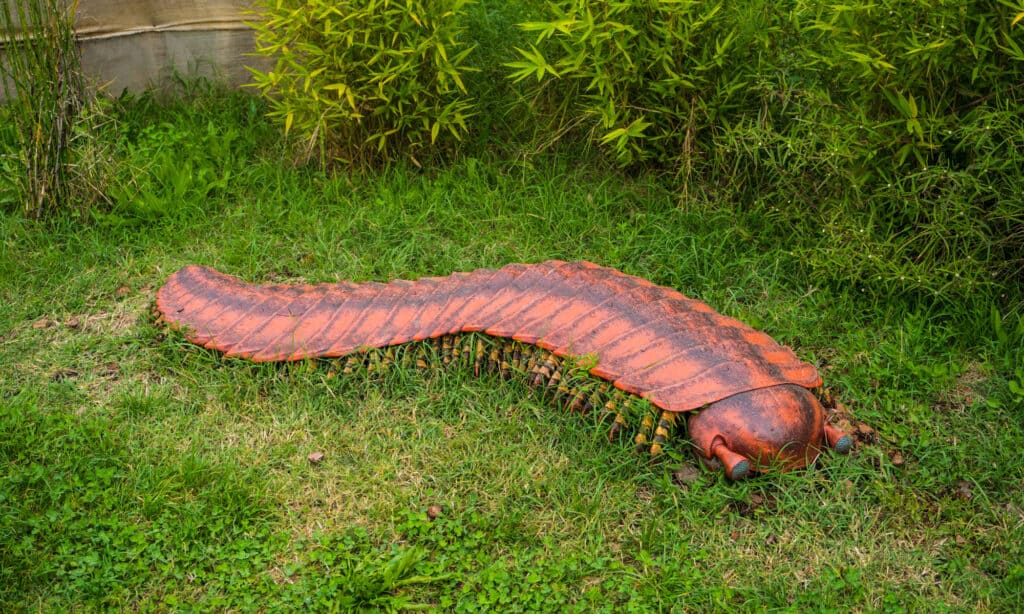
It was the largest land invertebrate of all time, reaching lengths of up to 2.6 meters (8.5 feet) and weights of up to 45 kilograms (100 pounds). That’s like a small car or a large dog!
Arthropleura was a relative of modern millipedes, but much bigger and more impressive. It had a series of well-developed segments with three lobes on each one, giving it a trilobite-like appearance. Its head is still a mystery, as no complete fossils have been found, but it may have had antennae and trumpet-like organs. It had many legs, probably around 30 pairs, that helped it move through the dense vegetation of the Carboniferous forests.


Arthropleura was probably a herbivore or a detritivore, feeding on plants or decaying organic matter. It may have also been able to secrete a foul-smelling substance to deter any potential enemies.
Arthropleura fossils are rare and usually fragmentary, as its exoskeleton was not very hard and did not preserve well. However, some impressive specimens have been found in Germany, Scotland, and England. The most recent discovery was made in 2018 on a beach in Northumberland, where a researcher found a piece of Arthropleura that measured 55 centimeters (22 inches) wide. This fossil suggests that Arthropleura could reach even larger sizes than previously thought.

Arthropleura was an amazing creature that shows how diverse and fascinating life was in the past. It was the king of the bugs and one of the most remarkable animals that ever lived.




